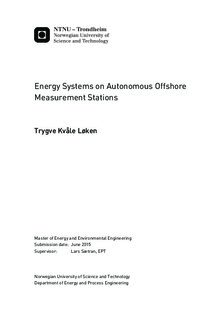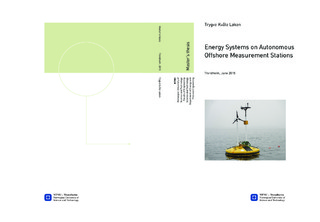| dc.description.abstract | In this study, a performance test has been performed on a 200 W marine wind turbine, both in the wind tunnel at The Fluid Engineering Department at the Norwegian University of Science and Technology, and mounted on a Wavescan measure buoy in a coastal location near Trondheim. Long term wind data satisfying the DNV-RP-C205 recommended practice for describing environmental conditions and environmental loads have been extracted from the Eklima database subordinated the Norwegian Meteorological Institute for a selected location called Sula weather station outside of the Norwegian coast. 10 years of data from Sula and a one-month performance test near Trondheim formed the basis for monthly wind energy estimates at the Sula site. Energy estimates for solar production on the Wavescan has been carried out at the same site utilizing a solar engineering software called Meteonorm.
The motivation of the study is to ensure continuous energy supply on remote measurement station enabling one-year autonomous operation. This criterion has proven obtainable at the selected site with an energy system consisting of the solar panels and fuel cells already installed on the standard Wavescan buoys combined with an Air Breeze wind turbine. An alternative solution relying solely on renewable energy resources is to increase the turbine rotor area by 85%, or to introduce a second turbine. | |

